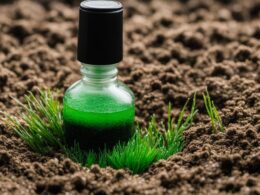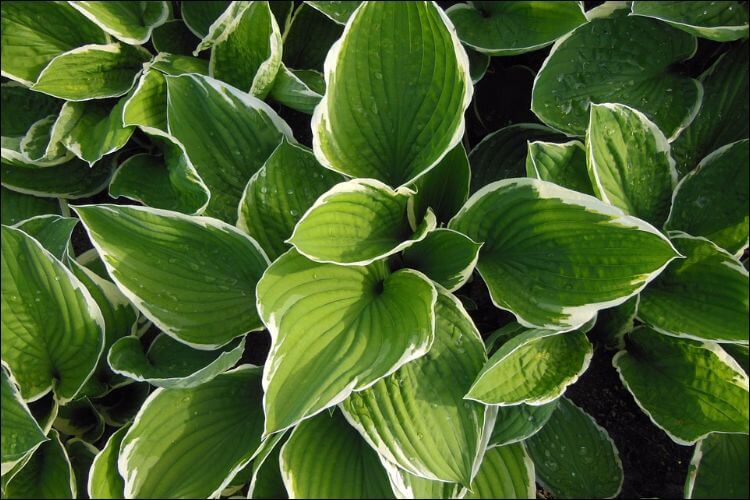Welcome to our article that will shed light on the fascinating world of fairy rings in your lawn. Have you ever woken up to find circular formations of lush green grass or mushrooms magically appearing overnight? These mysterious rings, known as fairy rings, are not only enchanting to look at but also have an impact on the health of your lawn. In this article, we will explore the causes of fairy rings, how to manage and prevent them, and provide expert tips and advice to keep your lawn flourishing. So, let’s dive in!
But wait, what exactly are fairy rings? Fairy rings are circular formations that can appear on your lawn due to specific fungi in the soil. These fungi feed on decaying organic matter and release nitrogen, which promotes lush green growth in the surrounding grass. However, fairy rings can also cause damage to your lawn, depending on the type of ring.
There are three types of fairy rings: Type 1, Type 2, and Type 3. Type 1 rings are the most destructive, leading to drought conditions and brown, dead grass. Type 2 rings result in bright green circles or partial circles of turf, while Type 3 rings are characterized by a ring or partial ring of mushrooms. Understanding the different types of fairy rings is essential in managing and preventing their appearance in your lawn.
So, how can you manage and prevent fairy rings? The good news is that by implementing proper lawn care practices, you can minimize the impact of fairy rings. It all starts with mowing your lawn at the right height, ensuring it’s no shorter than 3 inches. Proper irrigation and fertilizer application are also vital in maintaining a healthy lawn and preventing fairy rings from taking hold.
Stay tuned as we dive deeper into the causes of fairy rings, explore effective ways to manage and prevent them, and share expert tips to keep your lawn in pristine condition. Let’s embark on this journey to unveil the mystery of fairy rings!
Causes of Fairy Rings in Lawns
Fairy rings in lawns are caused by certain types of fungi that thrive in the soil. These fungi have a particular liking for decaying organic matter, such as tree stumps and roots. As they break down these organic materials, they release nitrogen in a circular pattern, promoting lush green growth in the surrounding grass.
The appearance and characteristics of fairy rings can vary depending on the type of fungi involved, soil conditions, and environmental factors. There are three distinct types of fairy rings: Type 1, Type 2, and Type 3.
Type 1 fairy rings are the most destructive as they hinder water absorption by the soil, resulting in brown, dead grass. This occurs because the fungi in these rings produce hydrophobic substances that repel water. As a result, the surrounding grass suffers from drought-like conditions.
Type 2 fairy rings are characterized by vibrant green circles or partial circles of turf. These rings are fueled by fungi that rapidly release nitrogen, stimulating excessive grass growth. The grass within these rings often appears healthier and more vigorous compared to the surrounding area.
Type 3 fairy rings are marked by the presence of a ring or partial ring of mushrooms. These rings are commonly observed during wet weather conditions, particularly in soils that are poorly drained. The mushrooms within these rings play a crucial role in the lifecycle of the fungi.
Managing Fairy Rings in Your Lawn
Proper lawn care practices are essential for managing fairy rings in your lawn. By following these practices, you can minimize the appearance and impact of fairy rings and maintain a healthy and beautiful lawn.
Mowing Height: Mow your lawn at a height of no shorter than 3 inches. This promotes healthy grass growth and reduces stress on the turf. Avoid irregular mowing patterns and remove any thatch that builds up on the soil surface. Thatch can interfere with water and oxygen penetration, making it more difficult for your grass to thrive.
Irrigation: Proper irrigation is crucial for managing fairy rings. Avoid overwatering your lawn and manually adjust your irrigation system based on weather conditions instead of relying on a set schedule. This ensures that your lawn receives the right amount of water, preventing conditions that can promote the growth of fairy rings.
Fertilization: Fertilize your lawn based on the nutrient makeup of the soil. Different soils require different amounts of fertilizer to maintain optimal health. It’s important to conduct a soil test to determine the specific needs of your lawn. By providing the right nutrients, you can strengthen your grass and minimize the risk of fairy ring formation.
How Can Yellow Flower Ground Cover Affect the Formation of Fairy Rings in Your Lawn?
Yellow flower ground cover can contribute to the formation of fairy rings in your lawn. The dense growth of these plants can create a barrier that prevents water and air from reaching the soil, which can lead to the development of these circular patterns of grass discoloration.
Conclusion
Fairy rings in lawns may seem like a mysterious phenomenon, but they can be managed effectively through proper lawn care practices. By understanding the causes of fairy rings, such as specific fungi in the soil and their impact on grass growth, you can take steps to prevent and minimize their appearance in your lawn. Regular mowing at the right height, proper irrigation practices, and fertilization based on soil needs are key to managing fairy rings.
If you notice fairy rings in your lawn, it’s important to take action promptly. Ignoring these rings can lead to further damage and potential lawn disease. By applying the right lawn treatment, you can effectively control and eradicate fairy rings. Consider using fungicides specifically formulated to target the fungi responsible for fairy rings, as this can be an effective solution for eliminating the problem.
While managing fairy rings on your own can be challenging, especially if the rings are already well-established, consider seeking professional lawn treatment services. These professionals have the expertise and tools to assess the situation accurately and provide appropriate treatment options tailored to your specific needs. Remember, a healthy and vibrant lawn is a reflection of your dedication and care. With the right approach, you can maintain a beautiful lawn, free from the harm caused by fairy rings.











